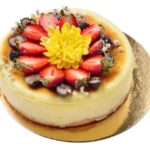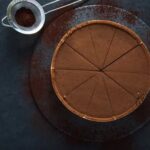Butter icing, also known as buttercream, is a classic and versatile frosting that can be used to decorate cakes in a variety of ways. In this article, we will explore the art of decorating cakes with butter icing, from essential ingredients and tools needed to different techniques for applying the icing and troubleshooting common issues.
Whether you are a beginner or an experienced baker, mastering the art of butter icing decoration can elevate your cake-baking skills to the next level.
When it comes to decorating cakes, butter icing offers endless possibilities for creativity and customization. From simple spreading to intricate piping and designing, butter icing allows you to add personal touches and decorative flair to any cake. In addition to its flexibility in application, butter icing also provides a smooth and creamy texture that enhances the overall taste and presentation of the cake.
In this comprehensive guide, we will cover everything you need to know about decorating cakes with butter icing, including tips for achieving professional-looking decorations, choosing the right colors and flavors, troubleshooting common issues, and creative ideas for themed and seasonal designs. Whether you’re looking to adorn a birthday cake with vibrant colors or create an elegant wedding cake masterpiece, mastering the art of decorating with butter icing will open up a world of possibilities for your cake creations.
The Essentials
Decorating a cake with butter icing is a fun and creative way to make your baked goods stand out. But before you start, it’s important to have the right ingredients and tools on hand. Here’s a list of essentials you’ll need to decorate a cake with butter icing:
Ingredients:
- Unsalted butter
- Confectioners’ sugar (powdered sugar)
- Vanilla extract or other flavorings
- Food coloring (if desired)
- Milk or heavy cream (for adjusting the consistency of the icing)
Tools:
- Spatula or offset spatula for spreading the icing
- Piping bags and various tips for piping designs
- Bench scraper for achieving smooth surfaces
- Icing smoother for creating sharp edges and smooth finishes
- Toothpicks or small paintbrushes for intricate details
Once you have all the necessary ingredients and tools, you’ll be well-equipped to start decorating your cake with butter icing.
It’s important to note that the quality of your ingredients and tools can impact the outcome of your decorations. Using high-quality butter, confectioners’ sugar, and flavorings will result in a more delicious and aesthetically pleasing finish. Similarly, investing in good quality piping bags, tips, and smoothing tools will make the decorating process much smoother. With these essentials in place, you’ll be ready to create beautifully decorated cakes with butter icing.
Preparing the Cake for Icing
When it comes to decorating a cake with butter icing, one of the most important steps is preparing the cake itself. Achieving a smooth and even surface will provide the perfect canvas for your butter icing decorations. Here are some essential tips to ensure that your cake is ready for the icing process:
1. Leveling the cake layers: Before beginning the icing process, it’s crucial to ensure that your cake layers are level. Use a serrated knife or a cake leveler to trim any domed tops and create an even surface. This will prevent your icing from being lumpy or uneven.
2. Crumb coating: Applying a thin layer of butter icing to the entire cake before adding the final layer can help to seal in any crumbs and create a smooth base for decorating. This step is especially important when working with particularly crumbly cakes, such as red velvet or carrot cake.
3. Chilling the cake: After applying the crumb coat, it’s beneficial to chill the cake in the refrigerator for at least 30 minutes. This will allow the butter icing to harden slightly, making it easier to apply the final layer of icing without disturbing the crumb coat.
By following these tips, you can ensure that your cake is well-prepared for decorating with butter icing. A smooth and even surface will not only make the aesthetic aspect of decorating more manageable but also contribute to a professional-looking finished product.
Remember, practice makes perfect when it comes to preparing cakes for butter icing decoration. Take your time and don’t be afraid to experiment with different techniques until you find what works best for you and your specific cake recipe.
Different Techniques for Applying Butter Icing
Butter icing is a versatile and popular choice for decorating cakes, offering a smooth and creamy texture that can be easily manipulated to create a variety of designs. Whether you’re aiming for simple, elegant decorations or intricate, detailed patterns, butter icing provides a wide range of options to suit any cake style. In this section, we will explore the different techniques for applying butter icing, from basic spreading to more advanced piping and design creation.
When it comes to decorating a cake with butter icing, there are several methods you can use to achieve your desired look. The simplest technique is spreading the butter icing evenly over the surface of the cake using a spatula or palette knife. This method creates a smooth finish and is ideal for simple, classic designs.
For those looking to take their cake decorations up a notch, piping is an excellent technique for creating beautiful and intricate designs with butter icing. Using a pastry bag and various piping tips, you can pipe out borders, flowers, rosettes, swirls, and other decorative elements onto the cake. This method allows for more precision and creativity in your designs and adds an elegant touch to any cake.
If you’re feeling particularly creative, you can also use butter icing to create more intricate designs on your cake. This could include creating delicate lace patterns using stencils or freehand piping elaborate shapes and figures. By experimenting with different tools and techniques, you can unleash your creativity and turn your cake into a work of art. Whether you choose simple spreading or opt for more advanced piping and design creation, mastering these techniques will elevate your cake decorating skills.
Remember that practice makes perfect when it comes to mastering the art of decorating cakes with butter icing. Take your time to experiment with different techniques and designs until you feel confident in executing professional-looking decorations. With patience and dedication, you’ll soon be able to create stunning cakes that are sure to impress any crowd. And don’t forget to have fun along the way.
Choosing the Right Colors and Flavors for Butter Icing to Complement the Cake
When it comes to decorating a cake with butter icing, choosing the right colors and flavors is key to creating a visually appealing and delicious final product. The color and flavor of the icing should complement the flavor of the cake while also adding visual interest to the overall design.
For classic cake flavors such as vanilla or chocolate, traditional buttercream flavors like vanilla, chocolate, or almond are popular choices. These flavors enhance the taste of the cake while providing a smooth and creamy texture. For more unique cake flavors like red velvet or lemon, consider using complementary buttercream flavors such as cream cheese or citrus-infused buttercreams.
In addition to flavor, the color of the butter icing should be carefully chosen to coordinate with the overall theme or occasion of the cake. Pastel shades are perfect for spring or Easter-themed cakes, while bold and vibrant colors work well for birthday or celebration cakes. For weddings or more formal events, neutral tones such as ivory or blush can add an elegant touch to the cake design.
Ultimately, experimenting with different flavor and color combinations is a fun way to personalize your cakes and develop your decorating skills. By understanding how different colors and flavors can complement each other, you can elevate your cake decorating game and create stunning and delicious creations.
| Flavor | Recommended Cake Flavors |
|---|---|
| Vanilla | Classic Vanilla, Chocolate |
| Chocolate | Classic Chocolate |
| Citrus-Infused | Lemon, Orange |
Tips for Achieving Professional-Looking Decorations With Butter Icing
Consistency Is Key
When it comes to achieving professional-looking decorations with butter icing, one of the most important factors to consider is the consistency of the icing. If the icing is too thin, it will not hold its shape when piped or spread on the cake.
On the other hand, if it is too thick, it will be difficult to work with and may result in uneven or rough textures on the cake. To achieve the perfect consistency, it is essential to follow a reliable recipe and pay close attention to the measurements of each ingredient.
Practice Makes Perfect
Decorating a cake with butter icing may seem daunting at first, especially when attempting intricate designs or piping techniques. However, as with any skill, practice makes perfect. It is important not to get discouraged if the first few attempts do not turn out as expected. Taking the time to practice different techniques and designs will ultimately lead to improved skills and more polished decorations.
Attention to Detail
The little details can make a big difference when it comes to achieving professional-looking decorations with butter icing. Taking the time to smooth out any imperfections in the icing, ensuring that colors are blended seamlessly, and paying attention to symmetry and balance in designs can elevate a simple cake into a work of art.
It’s also important to step back and take a moment to assess the overall look of the cake before deciding that it’s finished. Making small adjustments and refinements can greatly enhance the final result.
Troubleshooting Common Issues When Decorating With Butter Icing
Crumbly or Gritty Texture
One common issue when decorating with butter icing is a crumbly or gritty texture. This can be caused by not creaming the butter and sugar together properly, or by adding too much powdered sugar at once. To avoid this, ensure that your butter is at room temperature before starting and beat it well with the sugar until light and fluffy. When adding powdered sugar, do so gradually and make sure it is well incorporated before adding more.
Runny or Soft Consistency
Another problem that decorators often encounter is a runny or soft consistency in their butter icing. This can be due to using warm ingredients, such as melted butter, or adding too much liquid, such as milk or flavorings. To fix this issue, try refrigerating the icing for a short time to firm it up. You can also add more powdered sugar to thicken it, but do so in small increments to avoid over-sweetening the icing.
Air Bubbles in Icing
Air bubbles can also be a pesky problem when decorating with butter icing. These bubbles can cause an uneven surface and make it difficult to achieve smooth decorations. To prevent air bubbles, start by beating the butter and sugar thoroughly before adding any other ingredients. When mixing in liquids, do so gently and avoid over-mixing the icing. If air bubbles still appear, you can use a spatula to press them out while smoothing the icing on the cake.
By being aware of these common issues when decorating with butter icing and knowing how to troubleshoot them, you’ll be able to create beautiful and professional-looking cake decorations with ease.
Remember: Practice makes perfect.
Creative Ideas for Decorating Cakes With Butter Icing, Including Seasonal and Themed Designs
Butter icing is a versatile and delicious way to decorate cakes, and it offers endless possibilities for creativity. One of the best aspects of using butter icing for cake decoration is the ability to customize designs to fit any occasion or theme. Whether it’s a birthday, holiday, wedding, or other special event, butter icing can be used to create unique and stunning decorations that will impress your guests.
For seasonal designs, consider using butter icing to create beautiful flowers for spring, vibrant leaves for autumn, snowflakes for winter, or even beach-themed decorations for summer. By using different piping tips and colored icing, you can easily bring the spirit of each season to life on your cake.
For example, use pastel colors and floral designs for spring cakes, warm earth tones and leaf designs for fall cakes, icy blue and white snowflake designs for winter cakes, and bright colors with beach-themed decorations like seashells and palm trees for summer cakes.
Themed cake designs are also popular choices for special occasions. Butter icing allows you to bring characters, symbols, or elements from a specific theme to your cake design.
Whether it’s a favorite cartoon character for a child’s birthday or a specific motif for a themed party, butter icing can be used to meticulously recreate these elements on the cake’s surface. This could involve creating intricate patterns or sculpting small figures out of butter icing to capture the essence of the chosen theme.
For those who enjoy challenges in their decorating endeavors or have an artistic flair, experimenting with more complex designs such as 3D shapes or tiered effects is also possible with butter icing. This could include sculpting edible sculptures or creating multi-dimensional patterns on the cake’s surface. The key is to let your imagination run wild while exploring different techniques and tools that can help bring your vision to life.
With some patience and practice in using various design elements such as color palettes, shape diversity/variation when cutting openings – its recommended yachtsman needs some homework so they don’t result frustrated after not completing their project successfully due getting tired quickly.
Conclusion
In conclusion, butter icing offers endless possibilities for decorating cakes and creating beautiful, delicious works of art. By following the tips and techniques outlined in this article, anyone can learn how to decorate a cake with butter icing like a pro. From preparing the cake for icing to choosing the right colors and flavors, as well as troubleshooting common issues, we have covered all the essentials.
It is important to remember that practice makes perfect when it comes to decorating cakes with butter icing. Even seasoned bakers continue to experiment with new designs and techniques to hone their skills. Don’t be afraid to get creative and try out different ideas – whether it’s piping intricate patterns or crafting themed decorations – the only way to improve is by practicing and experimenting regularly.
So, next time you have a special occasion or simply want to impress your friends and family with a beautifully decorated cake, put your newfound skills into practice. With patience, dedication, and a sprinkle of creativity, you’ll soon be able to create stunning cakes adorned with butter icing that are sure to wow everyone who sees them. Happy decorating.
Frequently Asked Questions
How Do You Top a Cake With Buttercream?
To top a cake with buttercream, start by applying a crumb coat of frosting to seal in the crumbs. Then, spread a thicker layer of buttercream on top and use an offset spatula to create smooth swirls or peaks.
What Is the Trick to Buttercream Frosting?
The trick to buttercream frosting is to ensure that your butter is at room temperature when you start. This will make it easier to cream the butter and sugar together until light and fluffy, resulting in a smooth and creamy frosting.
How Do You Stick Decorations to a Buttercream Cake?
To stick decorations to a buttercream cake, gently press them into the frosting while it’s still soft. If the decorations are heavier, such as fondant shapes or candy pieces, you can also use a bit of extra buttercream as “glue” to secure them in place on the cake.

Welcome to my blog about home and family. This blog is a place where I will share my thoughts, ideas, and experiences related to these important topics. I am a stay-at-home mom with two young children. I hope you enjoy reading it! and may find some helpful tips and ideas that will make your home and family life even better!





